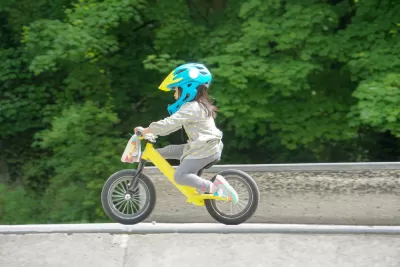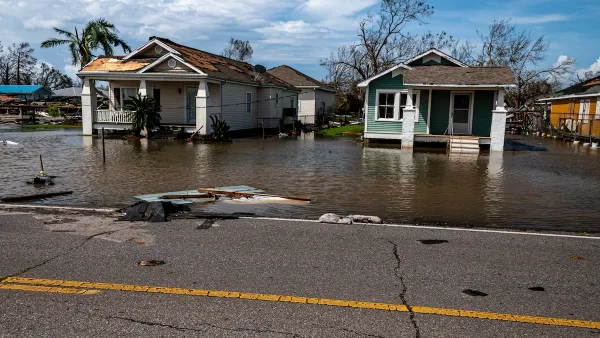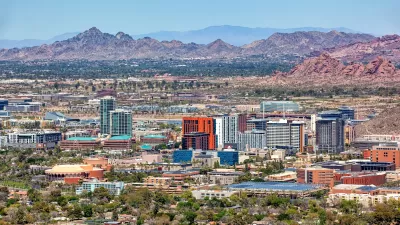Kids need to go places just as adults do, and they have needs many adults don’t have.

In a blog for the Saporta Report, Doug Joiner writes that transportation planners don't do enough to consider children. Joiner argues that children represent a particularly vulnerable population with specific needs that will not be met if planners only consider adults. Joiner starts with the example of Atlanta, "If leadership in public and private sectors are not willing to invest, explore change and innovation, they will be the missing pieces that would ensure that this international city is child safe, healthy, eco-friendly, and a joyful place to live," Doug Joiner writes.
To prove that children are left out of transportation plans, Joiner points to a number of plans that mention children once or just a handful of times. But children need to travel just as adults do, to get to school, to attend activities and to socialize. Joiner argues that children should be thought of as commuters because: though they might not work, they are making daily trips to school.
To Joiner, this inclusion can help planners consider the population and would provide a route through which to reach out to the community they seek to engage with their plan. "The notion of children as commuters, when utilized as a community engagement tool, would enable a centering to focus conversations and activities of adults regarding children and how to interact with them regarding the various associations they have during their daily lives," Joiner argues.
FULL STORY: The absence of children in transportation planning

Planetizen Federal Action Tracker
A weekly monitor of how Trump’s orders and actions are impacting planners and planning in America.

Vehicle-related Deaths Drop 29% in Richmond, VA
The seventh year of the city's Vision Zero strategy also cut the number of people killed in alcohol-related crashes by half.

As Trump Phases Out FEMA, Is It Time to Flee the Floodplains?
With less federal funding available for disaster relief efforts, the need to relocate at-risk communities is more urgent than ever.

More Apartments Are Being Built in Less-Dense Areas
Rising housing costs in urban cores and a demand for rental housing is driving more multifamily development to exurbs and small metros.

Plastic Bag Bans Actually Worked
U.S. coastal areas with plastic bag bans or fees saw significant reductions in plastic bag pollution — but plastic waste as a whole is growing.

Improving Indoor Air Quality, One Block at a Time
A movement to switch to electric appliances at the neighborhood scale is taking off in California.
Urban Design for Planners 1: Software Tools
This six-course series explores essential urban design concepts using open source software and equips planners with the tools they need to participate fully in the urban design process.
Planning for Universal Design
Learn the tools for implementing Universal Design in planning regulations.
Borough of Carlisle
Smith Gee Studio
City of Camden Redevelopment Agency
City of Astoria
Transportation Research & Education Center (TREC) at Portland State University
Camden Redevelopment Agency
City of Claremont
Municipality of Princeton (NJ)





























